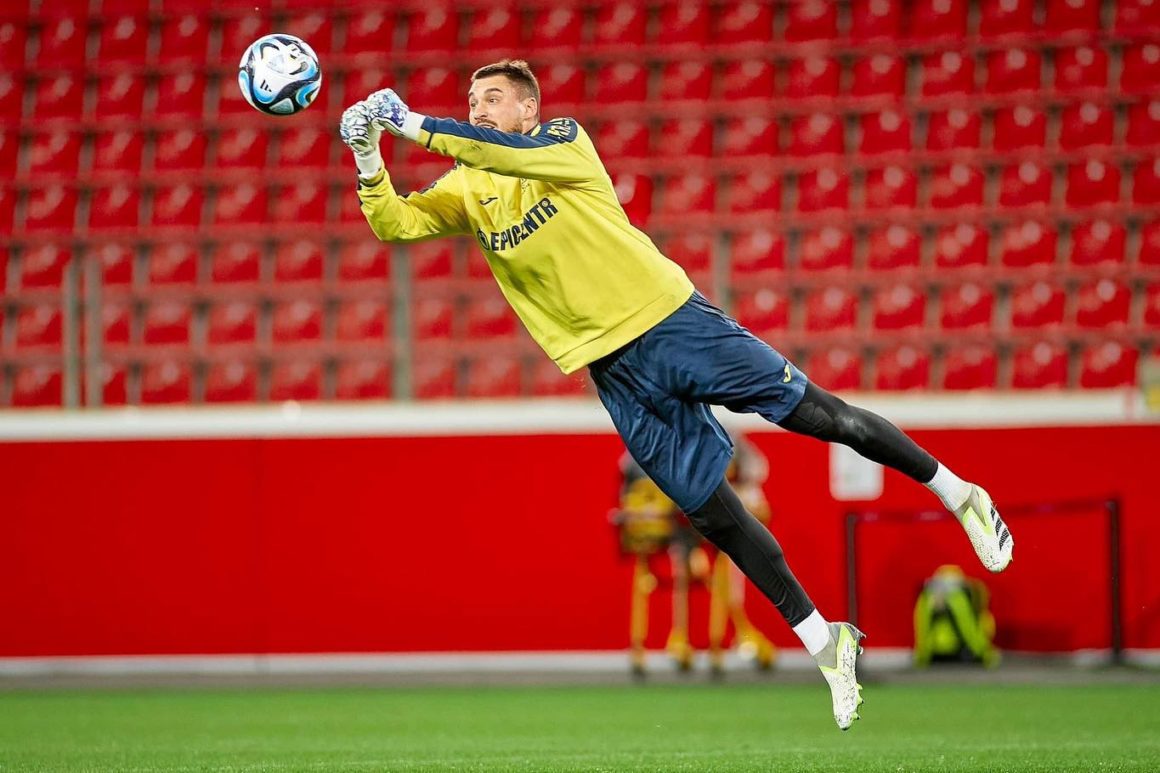As Russian bombs began to drop on Ukraine, football alongside the rest of societal activities came to a halt in February 2022. Clubs folded, stadiums were shelled, civilians were butchered and millions fled the country for Europe.
Yet this wasn’t the first time Ukraine’s most popular sport and society had been rocked. Russia’s initial invasion of Ukraine in 2014, also smothered much of Ukrainian football. The resilience shown in dealing with those serious problems proved fruitful in surviving the 2022 invasion too.
Now, the game has evolved to wartime conditions, but many questions remain about the long-term stability of the beautiful game for as long as Russia continues waging war.
Ukrainian football: a rough path since independence
Football in Ukraine remains one important element of society that helps keep some level of normalcy for its people. Fans often carry a nostalgia for the past, when Ukrainian clubs would regularly strike fear into their opponents. Among their past victories was dismantling the famed Barcelona football club, 3-0 in Kyiv, then again, 4-0 at Camp Nou. Both Champion League matches took place in 1997.
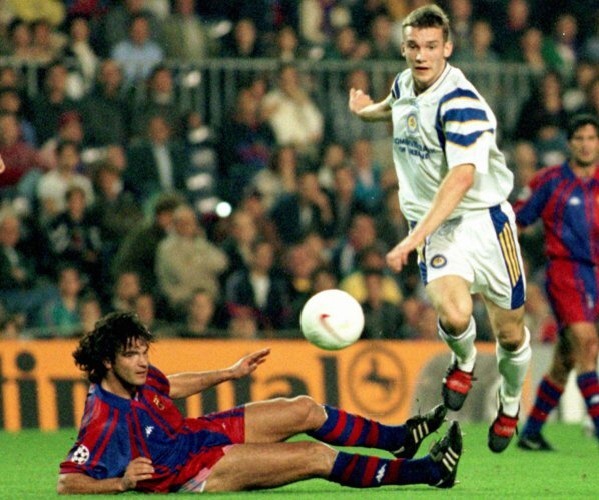
Now Ukrainian clubs are much less dreaded opponents for other European clubs. However, the mere fact that they still show up to play merits a far greater achievement given the circumstances.
After the Soviet Union dissolved in 1991, prominent Ukrainian football clubs, including Dynamo Kyiv, faced significant challenges in retaining top talent. Gaining independence was a tough process, and the economy found it hard to adapt to a new, free-market system. During this time, Ukraine faced hyperinflation and constant economic crises. Players often left Ukraine seeking better opportunities and financial security for their families. Previously, these clubs received funding from the centralized Soviet government, but post-independence, they had to adapt to a more business-like model to survive.
The general business environment in Ukraine also struggled to support football clubs. Sponsorships were scarce, and clubs found it challenging to maintain their infrastructure and pay their staff.
Adding to these challenges, FIFA recognized Russia as the official successor of the USSR's national team. This decision overshadowed Ukraine's significant contributions to Soviet football.
Ukrainian players were pivotal in the USSR's football success, with figures like Oleh Blokhin and Ihor Belanov leading the way.
Blokhin, who holds the record for most appearances and goals for the Soviet Union, was a world-class forward during the 1970s and 1980s. Blokhin won the European Footballer of the Year award (now known as Ballon D’Or) in 1975. His Dynamo Kyiv teammate and fellow forward Belanov would go on to pick up the accolade in 1986.
The 1986 World Cup saw one of the greatest Soviet teams, predominantly composed of Ukrainian players. Known for their precise play and spectacular goals, this team left an indelible mark on football history.
Dynamo Kyiv, a club that won the most championships in the Soviet Top League, also had significant continental achievements, winning the UEFA Cup Winners’ Cup in 1975 and 1986 and the European Super Cup in 1975, largely thanks to the legendary coach Valeriy Lobanovskyi.
He also groomed three Ballon d’Or winners for Ukraine – Oleh Blokhin, Igor Belanov and Andriy Shevchenko. Whilst these victories highlight Ukraine's rich football heritage, they’re often overshadowed in the larger narrative of Soviet sports history.
Background of Ukrainian football prior to the 2014 invasion
The nineties saw quite a lot of continuity when it came to Ukraine’s top teams. Bar Tavriya Simferopol’s shock triumph in the first-ever independent championship, Dynamo Kyiv retained their status as Ukraine’s most successful club for the remainder of the decade and into the early 2000s. Other popular clubs from the Soviet period such as FC Dnipro, Chornomorets Odesa, and Metalist Kharkiv continued to provide domestic competition.
However, it wasn’t until Rinat Akhmetov
took over Shakhtar Donetsk as president in 1996, that Dynamo’s league monopoly began to come under threat. As Akhmetov’s riches began to be pumped into the oligarch’s hometown club, a new rivalry was born. Slowly but surely, Akhmetov began to put Donetsk on the global map in no small part thanks to its football team. As the millennium arrived, foreign coaches were employed to bring the club their coveted first-ever league title.
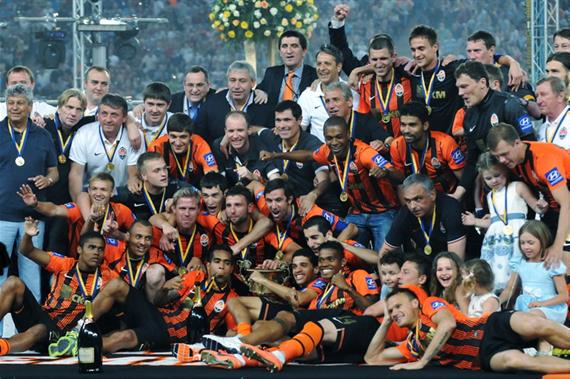
This first came to the fore in 2002 under the tutelage of the Italian, Nevio Scala, who won them their first league title. Then following the arrival of Romanian head coach Mircea Lucescu in 2004 the club drastically shifted in its development model. It began to focus heavily on the scouting of Brazilian talents.
The club would attract players from South America by offering them a springboard for their careers in Europe before selling them on for huge profits. Akhmetov wanted Shakhtar to model top European clubs in terms of management, squad ,and infrastructure. His club achieved their first European trophy in 2009 by winning the UEFA Cup.
This was followed by the opening of the state-of-the-art Donbas Arena; which helped facilitate the hosting of Euro 2012 in the city of Donetsk.
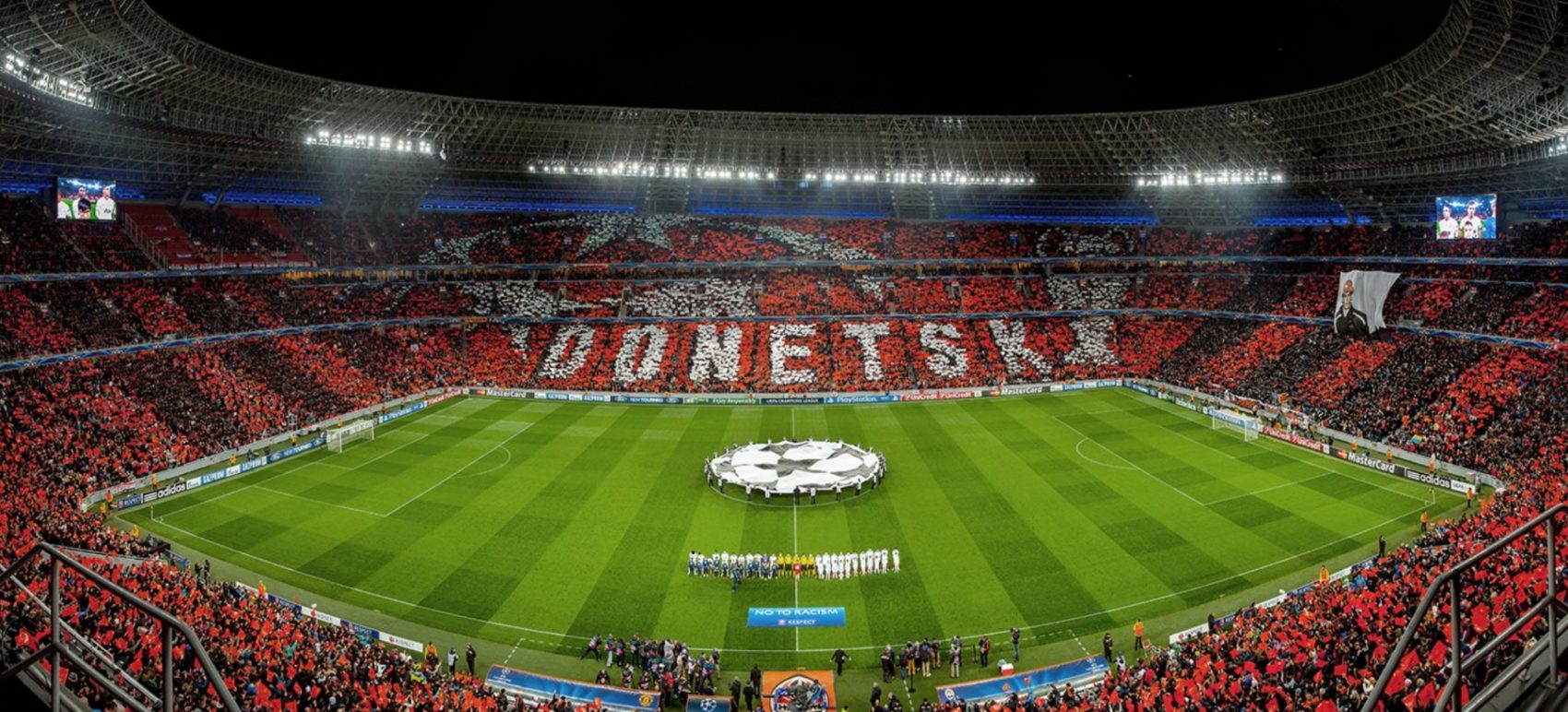
The post-Euro 2012 boom saw arguably the most successful period of Ukraine’s footballing history. Footballing infrastructure had improved in a lot of the country’s big cities and the league was at its most competitive. Dynamo and Shakhtar had Dnipro and Metalist on their coattails domestically whilst all four sides were going toe to toe with Europe’s best in UEFA competitions too.
All the while, football ultras across the country were using their platforms on the terraces to show increasing disdain and objection to the Yanukovych regime that juxtaposed the boom on the pitch.
One of the most vocal protests which lasted until 2014 was the "Free Pavlichenko: movement. It saw Dynamo Ultras, joined by other fan groups, call for the release of Dmytro and Serhiy Pavlichenko, the latter a Dynamo Ultra himself, who had been falsely imprisoned over the politically motivated murder of a pro-Yanukovych regime judge. Many saw this particular movement as a precursor for some of the organized protests, acts of solidarity, and experiences with law enforcement that ensued when Euromaidan began.
How Ukrainian football evolved from 2014-2022
Unsurprisingly, following the end of the Euromaidan and the start of Russia’s initial invasion of Crimea and the Donbas; Ukrainian football was also heavily impacted.
Crimean clubs were instantly lost. They could no longer compete out of Crimea in professional Ukrainian competitions. Ukraine’s first champions, Tavriya Simferopol and fellow peninsula side FC Sevastopol, folded in their Ukrainian forms. Tavriya would return to Ukraine’s third tier a few seasons later having been reformed and relocated to Kherson Oblast. They have since had to dissolve once more following Russia’s 2022 occupation of their new home.
Meanwhile, the clubs in Donetsk and Luhansk were forced into internal exile within Ukraine. Shakhtar moved to Kyiv and began to search for a new home across the country; first trying Lviv then Kharkiv before settling in Kyiv permanently. The players, staff, and club personnel had to leave their belongings, their training base, and their new stadium overnight.
The Donbas Arena remains abandoned and has not seen football played within it ever since. Zorya Luhansk found a new home in Zaporizhzhia and was based there until early 2022. Other clubs from the area such as Olimpik Donetsk also relocated before folding as a result of lack of funds and ultimately purpose. When a club has no fan base, is there really much point in its existence?
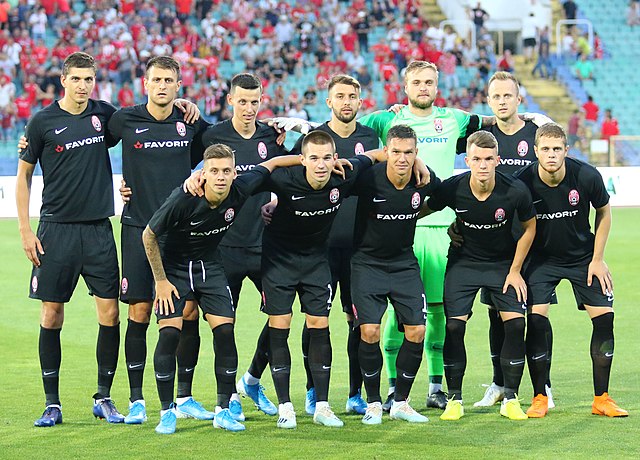
Even clubs that weren’t directly in Russian-occupied areas saw themselves affected. Metalist Kharkiv, a European stalwart prior to 2014, saw the club fall into decline and eventual bankruptcy following the fleeing of their pro-Russian Yanukovych ally owner Serhiy Kurchenko post-Euromaidan. One of Ukraine’s most well-supported clubs slowly disappeared as funds dried up.
The case of Metalist was a prime example showcasing how many of Ukraine’s well-established football clubs were susceptible to the actions or inactions of their wealthy owners with dubious political links.
FC Dnipro would follow in their arch-rival’s fate a few years later. On this occasion, it was due to the oligarch owner Ihor Kolomoyskyi allegedly being unwilling to pay certain outstanding debts to former employees and as a result, just 2 years after the club played in the Europa League final, it ceased to exist; much to the anger of the club’s hardcore support.
In the years following 2014, the top flight at one stage dropped from 16 to 12 sides but slowly recovered to its pre-2014 capacity in 2021. This has astonishingly remained stable even after the 2022 full-scale invasion despite a large loss of professional clubs over the past 20 months.
One thing that has possibly changed for the better is the arrival of a new wave of football club ownership. Towards the end of the 2010’s, agricultural business people had begun to invest heavily in football clubs. Some being from the city, town or village where the agricultural companies were based or from further afield.
Stellar examples that remain in the UPL to this day are Kolos Kovalivka, LNZ Cherkasy and Oleksandriya
. Their long-term success is currently unforeseeable with the grain blockade and issues of exports but for the time being, they seem to be the new stable power in Ukrainian football ownership alongside outliers such as Polissya’s billionaire supermarket co-owner Hennadiy Butkevych and Kryvbas’ iron ore company owner Kostyantyn Karamanits. Meanwhile, the next generation of ownership seems to be sprouting too with Metalist 1925 being recently taken over by renowned cryptocurrency exchange WhiteBit.
The destruction of Ukraine’s football infrastructure from the war
In a recent report by the Ministry of Youth and Sport, over 340 individual pieces of sporting infrastructure have been destroyed or damaged by Russia since the start of their full-scale invasion. Honing in on the football aspect, a large amount of stadiums have been impacted. The most notable being FC Desna’s ground in Chernihiv.
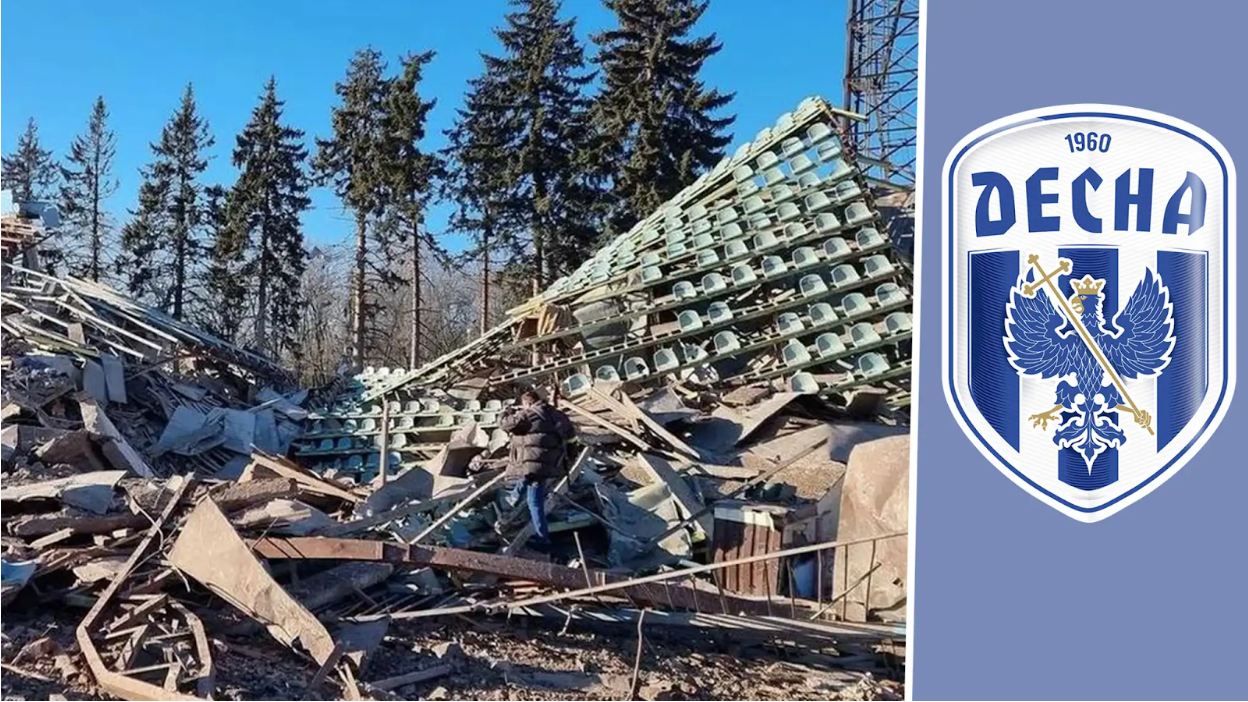
In the early months of last year, several direct hits saw both tribune structures completely wiped out as well as 25+ foot deep craters left in the actual pitch itself. As it was a sports complex, the club’s training base and offices were all nearby and heavily damaged. This was one of the main reasons that the team withdrew from professional competitions and remains in limbo as to whether it will ever return.
Elsewhere in Ukraine, the city stadium in Mykolaiv, Metalist’s training base in Kharkiv, Torpedo Stadium in Zaporizhzhia amongst others have also all experienced heavy damage as a result of rocket attacks and shelling. Within temporarily Russian-occupied territory, Enerhiya Nova Kakhovka’s stadium on the banks of the Dnipro River was ruined following the destruction of the hydroelectric dam a few miles upstream. The town and the stadium were completely flooded following Russia's attack on the dam.
Elsewhere in Russian-occupied areas, FC Mariupol’s ground has suffered its own heavy damage during the long siege that the city experienced in mid-2022. FC Mariupol is another former UPL club that had to withdraw and fold as a result of the occupation of its city and the club’s resource concentration being within it meaning relocating elsewhere in Ukraine would not be financially viable.
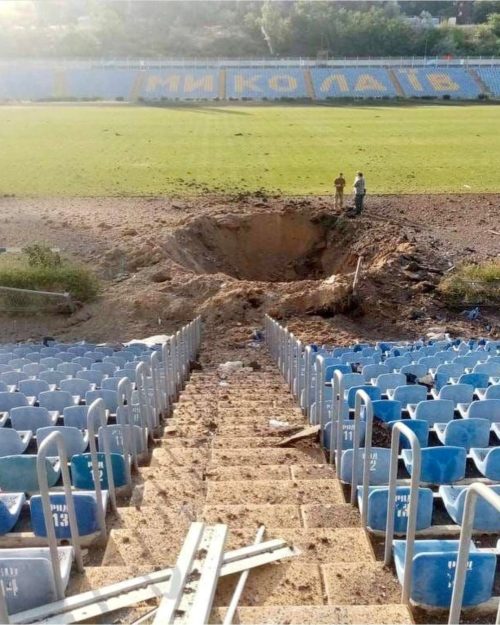
Mariupol’s vice-president Andriy Sanin said that around 50,000 citizens of Mariupol died from Russia’s invasion. He further stated “Our story was terrible, our city was almost destroyed. We had our training centre destroyed, our infrastructure, we couldn’t continue our activities and we couldn’t go on… And for a football club, it’s almost like a death.”
What role has football played for Ukrainian society
Lviv, a Ukrainian city, became a center of resistance against Soviet control following the introduction of policies known as Perestroika and Glasnost by Soviet leader Mikhail Gorbachev in 1986. These policies, meant to open up and reform the Soviet Union, inadvertently fueled a counterculture movement in Lviv, particularly within its rock music scene. The city's vibrant rock culture during the 1980s was pivotal in laying the foundation for the first anti-Soviet protests in Ukraine, with the football club Karpaty Lviv playing a significant role in these demonstrations.
In 1982, Soviet authorities decided to merge two of Lviv's football clubs: SKA Lviv and Karpaty Lviv. This decision, which was made without local input, led to the formation of a single club under the control of the Soviet Red Army. This merger meant that the distinct identity of Karpaty Lviv, a symbol of local pride and culture, was lost. By 1989, a movement began in Lviv to reverse this merger and restore Karpaty Lviv as an independent club.
This movement, reported by the Sovetskii Sport newspaper, was about more than just sports. The fans of Karpaty Lviv wanted their team's unique identity and colors back, seeing the Red Army's control of the club as a symbol of broader Soviet oppression. This struggle for the football club's autonomy became a part of the larger resistance against Soviet rule in Ukraine.
Ukrainian ultras (hardcore fans) have played an undeniably important role in civil society and fighting in the war itself. Due to their patriotic outlooks, the terraces were regularly places where acts of protest were either displayed or organized. Many took active roles in the Euromaidan protests before calling a nationwide truce between themselves following Russia’s invasion of the Donbas and Crimea. They would no longer fight amongst themselves at matches; they would instead unite against a common enemy and take up arms to do so. Many of the initial volunteer battalions that went to fight consisted of football ‘hooligans’.
A decade later and this sentiment has only intensified following the events of 2022. It is estimated over 80% of Ukraine’s football ultras are now fighting in the war. Some have lost their lives. Charity foundation Stands of Heroes
helps the families of over 300 fallen fans with financial, administrative, and psychological support. However, there are likely many more who have died. Whilst those remaining continue to fight for their country shoulder to shoulder with people they used to consider as their sworn enemies.
Players like Oleksandr Tymchyk from Dynamo Kyiv and Dmytro Riznyk from Shakhtar Donetsk have both lost brothers in the military. A startling statistic from the Kyiv International Institute of Sociology reveals that 78% of Ukrainians have relatives or friends harmed or killed in the war with Russia.
In his video message commemorating Ukrainian Armed Forces Day, President Zelenskyy strolled by Kyiv's iconic Dynamo Lobanovskyi Stadium. Zelenskyy recalled the ‘thousands of fans who are currently serving in the Armed Forces’ and how he hopes they will be able to return to support their teams in the future. Ukraine’s football ultras and fans are some of the biggest patriots in the country and their work is noticed by many, including the president.
What does the future of Ukrainian football look like
Ukrainian football’s future remains undetermined. It’s now entering a phase that is in stark contrast to that of both the pre and post-2014 eras. A recent CEIS study showed that the country’s top flight division has the smallest percentage of foreign players in Europe at around 14%. The days of Ukrainian clubs, namely Shakhtar, being the go-to destination for young, upcoming South American talents is a thing of the past.
Many such players now have easier routes to Europe’s top leagues as well as MLS in North America. Not only is the pull no longer there due to Ukraine being an active war-zone but the finances to purchase players for fees of over $5M are out of reach for Shakhtar’s and even Dynamo’s contemporary budgets.
The reality of the situation has meant that the Ukrainian Premier League and the two professional tiers below it are now looking internally. Clubs are focusing on developing their own academies and youth products which they can then sell onto the elite leagues in Europe for vast sums which in turn help keep the sides afloat.
The most recognizable example of this in action is Shakhtar’s sale of 22-year-old winger Mykhaylo Mudryk to Chelsea FC for an initial €70M with add-ons totaling up to €100M. Shakhtar themselves have several additional prospects who they’ll be hoping to shift in the coming windows for substantial fees.
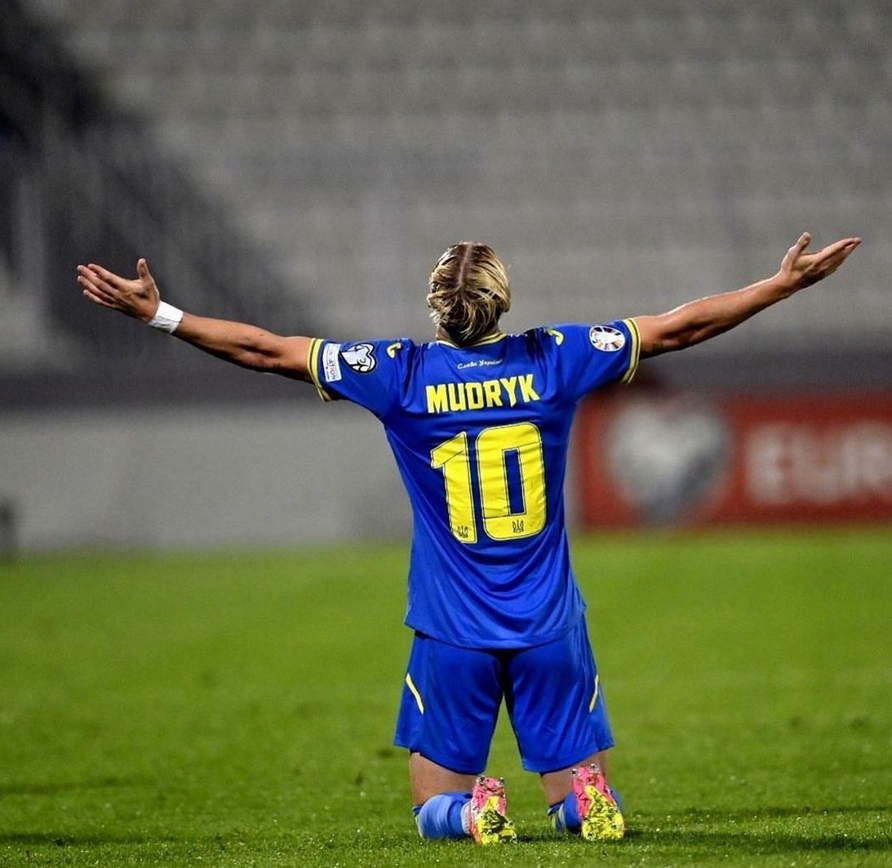
However, it is worth highlighting that with the start of Russia’s full-scale invasion in February 2022, hundreds of footballers under the age of 18 fled the country with their families and relocated across Europe. As a result, many of these talents have now found new suitors to develop under, including some of Bundesliga’s (Germany) and Serie A’s (Italy) top clubs.
So the talent drain has been a double hit from higher quality foreign talent leaving as well as some promising individuals. One of the main goals of the Ukrainian Association of Football is now to keep tabs on such players and ensure that they remain in the periphery of the scouts of the various youth national teams to ensure that they do not switch allegiances elsewhere on the continent.
Such outcomes are not all overtly negative. Countries such as Croatia have been utilizing a similar model ever since the fall of Yugoslavia. Their domestic competitions are unable to realistically compete with the top 10 best in Europe so they focus on ensuring the next generations are brought up correctly through their club systems and then earn strong compensation for them once they leave for some of the biggest clubs in the world.
They may have inconsistent representation in competitions such as the Champions League but their national team is regularly competing for top honors in the Euros and at the World Cup. This is a trade-off that needs to be weighed up.
Beyond this, the so-called ‘golden cages’ or ‘warm baths’ (high wages, low taxes and unrealistic asking price tags) that a lot of Ukraine’s most promising players found themselves trapped in prior to 2022, have since been shattered as a result of the full-scale war. Clubs can no longer pay handsome wages like they did in the past and the pull factor of home comforts amidst daily air raids, blackouts during winter, and martial law have pushed even the most timid of players to leave their comfort zones and try themselves in new leagues with differing cultures and languages.
As the war continues, there is a possibility that more Ukrainian clubs could fold. Recent reports have pointed out that Persha Liha side Nyva Buzova is ceasing operations despite only turning professional last year and gaining promotion to the second tier in that time. The owner will aim to refocus funds to help the Ukrainian army instead whilst has not ruled out a club revival once the war is won. Time will tell as to whether others will join Nyva Buzova in a similar fate.
Importance of football for Ukraine’s society
The war's presence continues to be unmistakably felt throughout Ukrainian football. Each match commences with a rendition of the national anthem followed by a solemn moment of silence, paying tribute to the fallen. The rhythm of the games is often disrupted by air raid alarms, leading to temporary pauses. Only recently, a UPL match took over 4.5 hours to complete 90 minutes as a result of the alerts. Whilst that fixture currently holds the record for the longest-ever game in Ukrainian football; instances where games last 2-3 hours are rising.
For those clubs representing Ukraine on the continental stage, lengthy bus journeys to get out of Ukraine, as a result of no air travel, are the new normal. They are time-consuming and tiresome but the players have now become weathered to such difficulties.
So much so that, in Shakhtar’s case, results on the pitch have seen them manage to beat Barcelona (in 2023) and draw with Real Madrid (in 2022) despite every one of their European opponents having drastic advantages over them. However, Shakhtar can be seen as an outlier with their fellow Ukrainian counterparts struggling to hold their own in the Europa and Conference League competitions. Travel fatigue, poor squad strength, and lack of finances have all been used as reasons for the difficulties.
Nonetheless, the war will continue to cast a long shadow over the sport, blurring the lines between football, politics, and warfare. Soldiers in trenches find solace and connection watching these matches, despite frequent interruptions. Meanwhile, the noticeable absence of fans in stadiums due to limited shelter capacity is also felt. However, a recent statement from the Ministry of Youth and Sport confirms discussions over the possibility of fans returning to grounds in the spring; if safety and security measures can be met.
In these trying times, Ukrainian football transcends mere sport. Each game is a testament to the nation's resilience and unity against the atrocities of war. The players' determination reflects the courage of their people, asserting their refusal to let Russia’s war disrupt their societal norms.
While some may underestimate the impact of sports in shaping national identity and spirit, Ukrainian football undeniably embodies a powerful symbol of hope. It provides a temporary escape from grim realities and nurtures a sense of communal support.
In a nation striving to maintain its everyday life amidst turmoil, football has become an emblem of optimism and defiance, echoing the soldiers' fight for normalcy, including the cherished tradition of sports.
Related:
- Ukraine kicks toward Euro 2024 amid bombs and blackouts
- During bleak times Ukrainian football may shine a light. Part 1: the history
- FC Zorya Luhansk: A story of war, financial destitution, and absolute fighting spirit

